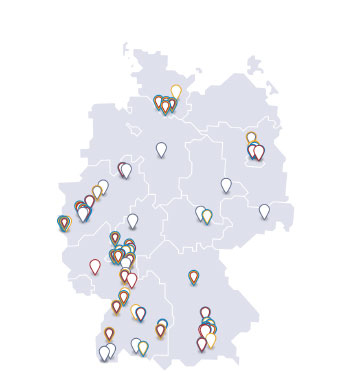How to report side effects
Reports on adverse reactions after the intake of medicines are helpful because pharmaceutical companies and competent authorities learn from them how to make the use of medicines even safer. For some years now, not only doctors and pharmacists have been able to report suspected adverse drug reactions, but also the users of medicines themselves or their relatives, if they wish so.
There are four main ways of reporting adverse reactions (see also figure): (1) ask the doctor to report the adverse reaction; (2) ask the pharmacist to do so; (3) report the adverse reaction on your mobile phone or computer at www.nebenwirkungen.pei.de/nw/EN; or (4) contact the manufacturer. In any case, the notification is forwarded and ientered into the large European database of suspected adverse drug reaction reports (EudraVigilance) within a short period of time.
As the database should not be filled with duplicate reports, anyone who reports an adverse reaction more than once is requested to indicate that the side effect was already reported before.
To download: Side effect reporting chart, jpg in landscape format and side effect reporting chart, pdf in landscape format. Free for use provided the source is cited.
A suspicion is enough
For a report to be made, it is sufficient to suspect that an observed physical or psychological event is related to previous use of a certain medication. Experts from competent authorities and pharmaceutical companies will investigate further if the drug actually caused the event.
No adverse reaction report can be rejected just because it seems too banal or only reports another case of a long-known adverse reaction. However, anyone who is faced with the question of whether or not it is worth the effort of reporting a side effect can consult the patient information leaflet: If an adverse drug reaction is already listed as "frequent" or "occasional", a notification is less urgent than if it is a "rare", "very rare" or even not yet listed in the patient information leaflet.
Risk minimization measures based on adverse reaction reports
Experts from competent authorities and pharmaceutical companies are constantly searching for abnormalities in the European adverse drug reaction database: Were side effects of a medicine reported that are not yet known? Are the reported side effects dangerous? Do reported side effects indicate that the drug is sometimes used incorrectly? - Authorities and companies analyse all available safety data on an ongoing basis, update the patient information leaflet accordingly, and advice doctors, pharmacists and sometimes directly patients on how to use the medicine safely or ow to avoid medication errors, if deemed necessary, even the withdrawal of a medicine from the market can be organised.
Statistical evaluations of the collected suspected adverse drug reactions are available for the public on a separate website called "European database of suspected adverse drug reaction reports".
What pharmaceutical companies do to make the use of medicines as safe as possible
Specific risk minimization measures related to adverse drug reaction are only one part of the even more comprehensive activities of pharmaceutical companies to ensure patient safety. For example, measures to fight counterfeit drugs are also an important piece of the puzzle. The following figure provides an overview about different measures that support the safe and effective use of medicines.
To download: "Drug safety: What pharmaceutical companies do" as JPG and as PDF. Free for use provided the source is cited.





